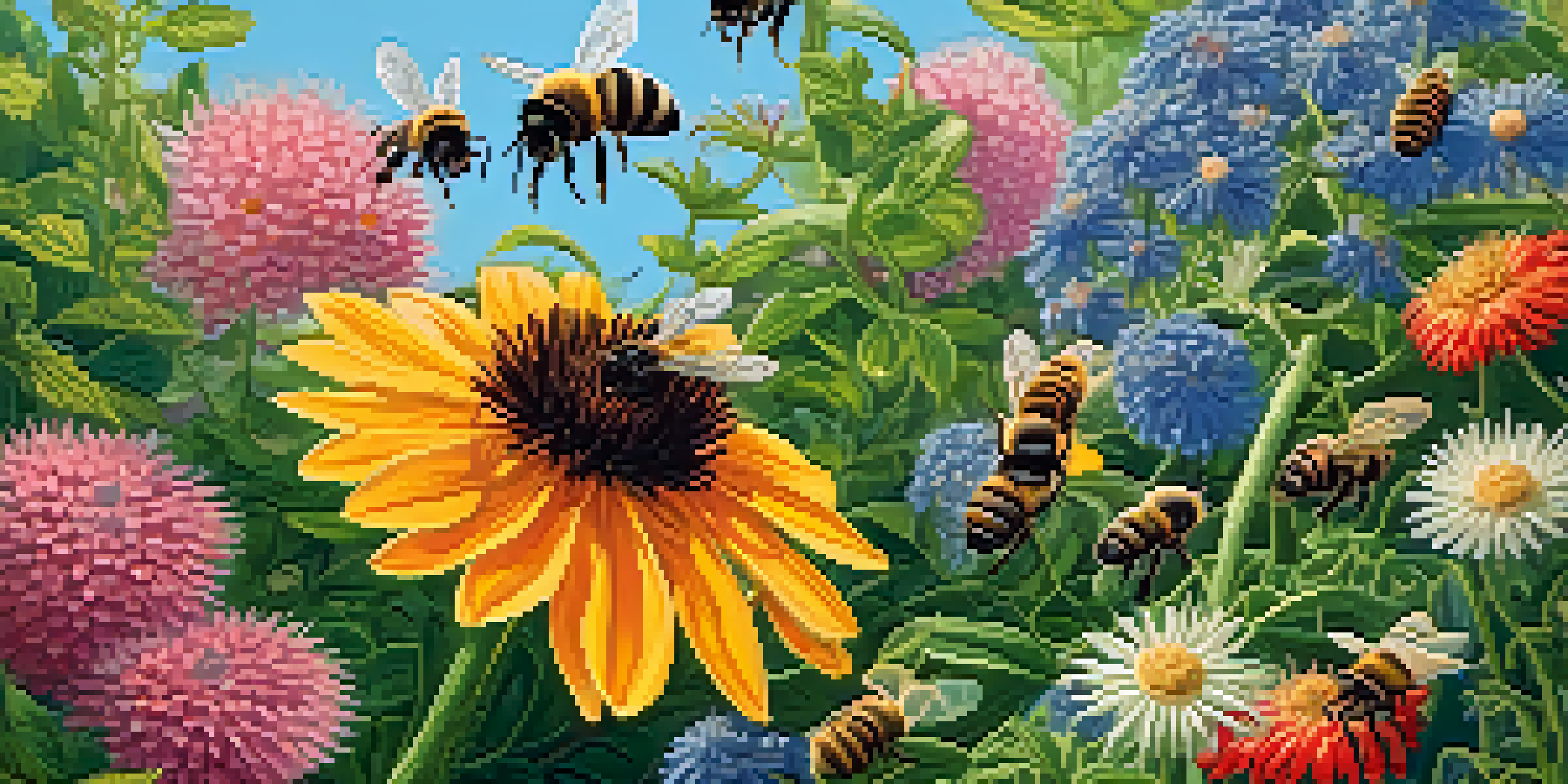Understanding Plant Interactions: Mutualism and Competition

What Are Plant Interactions?
Plant interactions refer to the various ways that plants influence each other within ecosystems. These interactions can be cooperative or competitive, affecting how plants grow and thrive. Understanding these dynamics is crucial for ecologists and gardeners alike, as it sheds light on the health and stability of an environment.
Defining Mutualism in Plants
Mutualism is a type of interaction where both species benefit from their relationship. For example, flowering plants and their pollinators, like bees, showcase this beautifully; while bees collect nectar for food, they help plants reproduce by spreading pollen. This win-win scenario not only supports the individual species but also enhances biodiversity.
Plant Interactions Shape Ecosystems
Plants influence each other through mutualism and competition, impacting ecosystem health and stability.
Examples of Mutualistic Relationships
One classic example of mutualism is the relationship between legume plants and nitrogen-fixing bacteria. The bacteria live in the roots of legumes and convert atmospheric nitrogen into a form that plants can use, while the plants provide the bacteria with carbohydrates. Such interactions are vital for soil health and fertility, showing how interconnected plant life can be.
Understanding Competition Among Plants
Competition occurs when plants vie for the same resources, such as sunlight, water, or nutrients, which can lead to a struggle for survival. This can happen between species or even within a single species, creating a dynamic environment where only the strongest or best-adapted plants thrive. Competition shapes plant communities and can influence ecosystem diversity.
Mutualism Enhances Biodiversity
Mutualistic relationships, like those between flowering plants and pollinators, promote species survival and ecological diversity.
Types of Plant Competition
There are two main types of competition: exploitative and interference. Exploitative competition happens when plants use up resources, while interference competition involves direct interactions, like shading or physical barriers. Understanding these types helps us appreciate how plants adapt to their surroundings, often leading to fascinating survival strategies.
The Balance Between Mutualism and Competition
In nature, mutualism and competition often coexist, creating a delicate balance. For instance, a plant may form a mutualistic relationship with a fungus to enhance nutrient uptake while simultaneously competing with neighboring plants for sunlight. This duality showcases the complexity of plant interactions and their ability to adapt to various environmental pressures.
Human Activity Disrupts Plant Dynamics
Human actions, such as deforestation, can weaken plant interactions and reduce biodiversity, threatening ecosystem balance.
Impact of Human Activity on Plant Interactions
Human activities, such as deforestation and urbanization, can significantly disrupt plant interactions. These changes often lead to the loss of biodiversity, which can weaken mutualistic relationships and intensify competition among remaining species. Understanding how our actions affect these interactions is crucial for conservation efforts and maintaining ecological balance.
Conclusion: The Importance of Plant Interactions
Recognizing the significance of plant interactions, both mutualism and competition, helps us appreciate the intricacies of ecosystems. These relationships are not just fascinating but also essential for the health of our planet. By fostering an understanding of these dynamics, we can better protect and nurture the natural world around us.